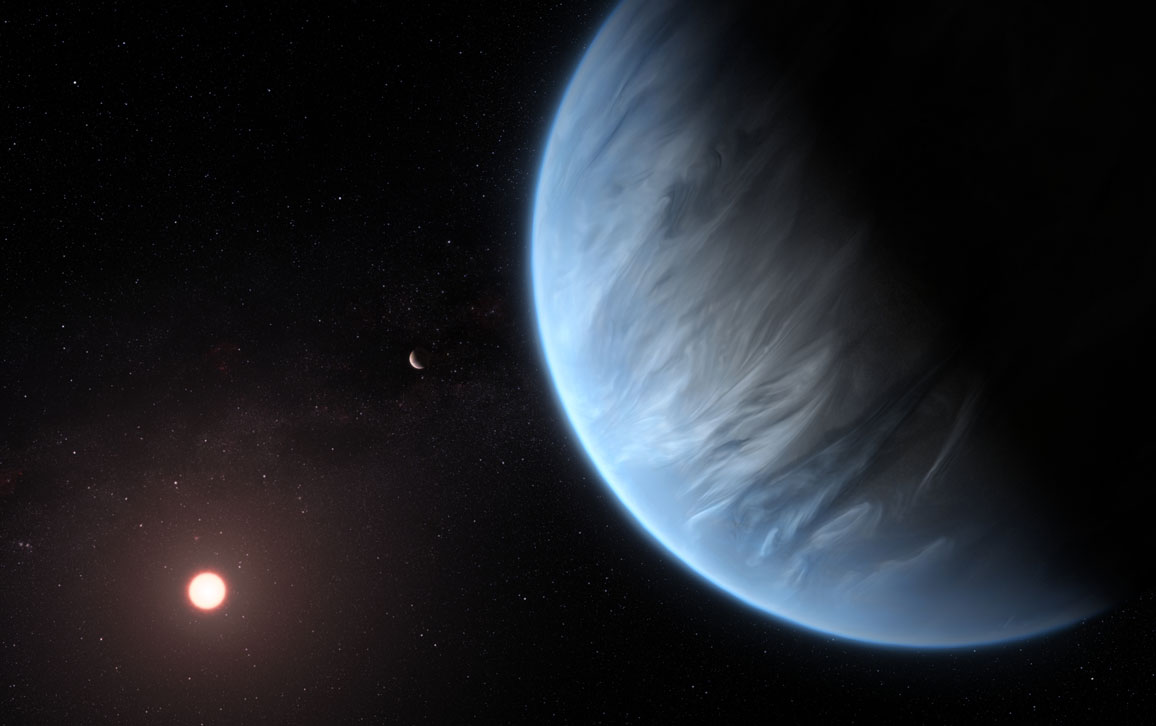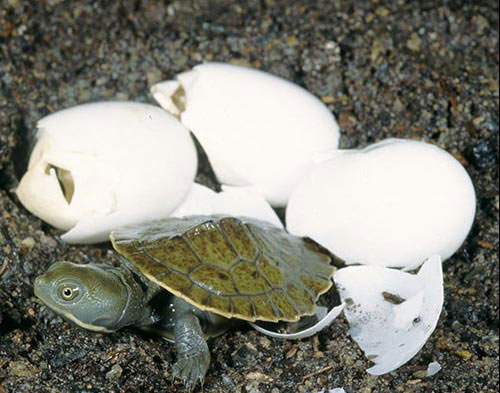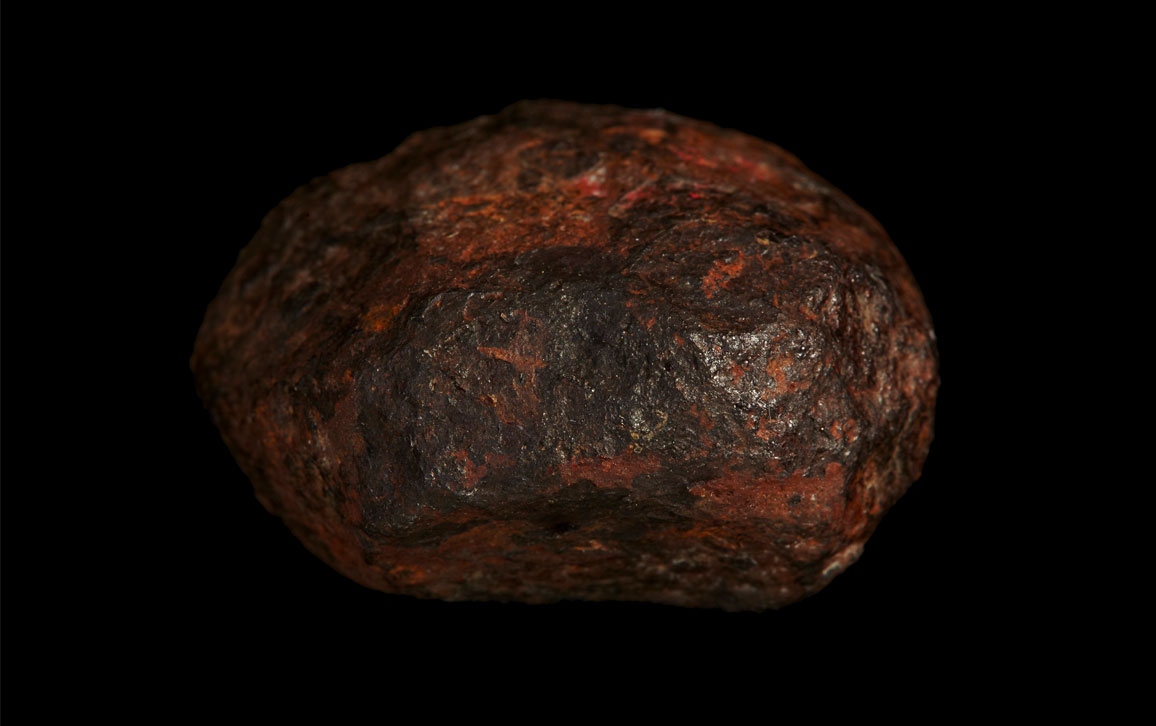
This Article From Issue
November-December 2019
Volume 107, Number 6
Page 331
In this roundup, managing editor Stacey Lutkoski summarizes notable recent developments in scientific research, selected from reports compiled in the free electronic newsletter Sigma Xi SmartBrief.
Water Detected on Exoplanet
For the first time, astrophysicists have detected water on a planet in the habitable zone of a star outside our Solar System. The planet, K2-18b, is 111 light-years away from Earth and orbits its star in the “Goldilocks Zone,” the not-too-hot-but-not-too-cold sweet spot where liquid water—and possibly extraterrestrial life—is most likely to be found. Astrophysicist Björn Benneke’s team at the Université de Montréal’s Institute for Research on Exoplanets examined data from the Hubble Space Telescope. Focusing on eight of the planet’s transits, or passages in front of its star, the team created a climate model that included water vapor that could condense into rain clouds. K2-18b is about nine times more massive than Earth. It orbits a weaker star than the Sun, but its orbit is tighter, and thus the planet receives approximately the same total energy that the Earth does. Despite the presence of water, K2-18b is unlikely to host alien life because of its thick atmosphere.

ESA/Hubble, M. Kornmesser
Benneke, B., et al. Water vapor on the habitable-zone exoplanet K2-18b. arXiv:1909.04642 (September 10).
Sleep Tied to Heart Health
Two studies have tied sleep patterns to lower incidences of cardiovascular events. A team at the University Hospital of Lausanne in Switzerland has found that occasional napping is associated with lower risk of cardiovascular disease. Nadine Häusler and her colleagues followed 3,462 individuals and discovered that those who napped once or twice a week had significantly lower rates of cardiovascular disease than those who did not take a midday rest. The team found that the nappers enjoyed this heart-health benefit regardless of the length of their naps. Meanwhile, a team at the Broad Institute of the Massachusetts Institute of Technology and Harvard University found that duration does matter when it comes to nighttime rest. Their research showed that individuals who sleep six to nine hours per night had lower risk of heart attacks than those who sleep less (who had a 20 percent higher risk) or more (who had a 34 percent higher risk). The benefits of healthy sleep duration extended to those with a genetic predisposition to heart attacks.
Daghlas, I., et al. Sleep duration and myocardial infarction. Journal of the American College of Cardiology 74:1304–1314 (September 10). Häusler, N., J. Haba-Rubio, R. Heinzer, and P. Marques-Vidal. Association of napping with incident cardiovascular events in a prospective cohort study. Heart doi:10.1136/heartjnl-2019-314999 (September 9).
Turtle Embryos Determine Sex
Freshwater turtles squirming inside their eggs may be able to influence their sex. The sex of a future turtle is tied to the temperature of the incubating egg: Colder eggs result in male turtles, whereas warmer eggs produce females. This link has caused concern that warming global temperatures will result in a glut of female turtles without potential mates, leading to their extinction. But new research from the Key Laboratory of Animal Ecology and Conservation Biology at the Chinese Academy of Sciences has discovered that turtles may be able to combat this trend by moving to cooler areas within their eggs. The group studied freshwater turtles and found a higher-than-expected range of temperatures within the eggs, with a gradient of up to 4.7 degrees. When the ambient temperature was low enough to skew the nest male, the embryos moved toward the warm side of the eggs, and the opposite movement occurred when the environment was warm. These findings expand the scope of conditions under which nests could produce a balanced brood.

G. Swan/OEH
Ye, Y. Z. et al. The embryos of turtles can influence their own sexual destinies. Current Biology 29:2597–2603 (August 19).
New Mineral Discovered
Mineralogists have found the first natural occurrence of the iron-carbite mineral edscottite. The sample came from the Wedderburn meteorite, which was found in Australia in 1951 and has been the subject of intense scrutiny ever since (years of testing have whittled the rock down to one-third of its original 210 grams). Synthetic versions of edscottite are created during steel production, but its presence in the meteorite is the first time the mineral was found in nature. Edscottite is defined by the structure of its five iron and two carbon atoms. It appears as white grains mixed with the other minerals that make up the red-and-black rock. Scientists theorize that the Wedderburn meteorite originated in the core of a planet, where the intense heat and pressure provided the extreme conditions required to create edscottite. The planet was destroyed when the Solar System was still young, and some of the remnants became asteroids, including this chunk that landed on Earth. Edscottite is named in honor of cosmochemist Edward R. D. Scott of the University of Hawaiʻi in Ma¯noa in recognition of his contributions to the study of meteorites.

Museums Victoria/Rodney Start
Ma, C. and A. E. Rubin. Edscottite, Fe5C2, a new iron carbide mineral from the Ni-rich Wedderburn IAB iron meteorite. American Mineralogist doi:10.2138/am-2019-7102. August 28).

American Scientist Comments and Discussion
To discuss our articles or comment on them, please share them and tag American Scientist on social media platforms. Here are links to our profiles on Twitter, Facebook, and LinkedIn.
If we re-share your post, we will moderate comments/discussion following our comments policy.